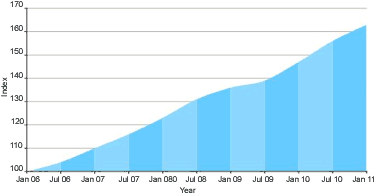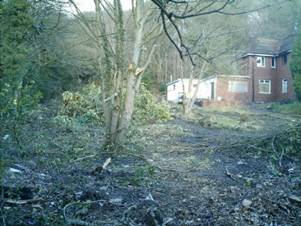There are essentially three different types of plots of land for sale; those with planning permission, those with potential for planning permission and those without planning permission. Obviously the most expensive and sought after are the ones with permission to build on, but you can expect to spend around 35% of your total costs on the land. Whether you’re looking for land for a self-build project or a development to sell on, there are a lot of important factors that you need to take into consideration.
The Internet contains a wealth of information on plots for sale with several different companies offering e-mail alerts or asking you to subscribe to be able to scour their databases. For example, Buildstore's Plotsearch (plotsearch.co.uk) offers access to almost 6,000 plots for a £100 fee. The best route will probably be through a land agent, who will be dealing with several land sellers and have contacts from many sources. Estate agents also get land for sale from time to time so it will be worth letting them know your requirements so that they can tip you off when something comes in.
Very importantly in the current climate, always check that the land is not on a flood plain; you can do this on the environmental agency’s website (environment-agency.gov.uk). Also check to see if the land is contaminated (particularly important on a brown-field site) in any way; particularly prevalent if the land has previously been used in some sort of commercial or industrial capacity. This can also be done with the environmental agency. Another thing to bear in mind is if there are any trees on the plot, are there any preservation orders on them? This information will be present in the local authority search and may affect the layout of your development.
Good building land is scarce so you can expect to compete with major developers for most of it. This is why a lot of self-builders will elect for a brown-field site or resort to “bungalow gobbling”. The term “bungalow gobbling” refers to buying a run-down property in order to knock it down and use the land that it stands on to build something better. Indeed some estate agents, Savills for example, actually have a division dedicated to locating “knock-down” properties. Some plots can even be part of a large garden that is being sold off.
Although it is a common cliché when talking about property, location really is everything, particularly if you are building property to sell on. A quick sale can make the difference between a healthy profit and a big loss.
Planning Permission
It will probably be easier to obtain planning permission if you intend to build near an existing development, rather than in green belt land. Even more likely if you’re buying a “knock-down” in order to obtain your building plot.
Planning permission comes in a few different flavours, outlined below:
- Outline Planning Permission (OPP) gives an indication of permitted development and should include a simple drawing to indicate the footprint of the building. OPP is valid for 5 years but further details must be submitted before work can commence
- Detailed Planning Permission (DPP) must be submitted within three years of obtaining OPP, and once granted building work must commence within two years.
- Full Planning Permission (FPP) is basically OPP and DPP rolled into one, done in one application. It is valid for five years and is often done for plots where the proposed development could be deemed as contentious; in a conservation area for example.
Remember that when dealing with local councils, things invariably go before a committee and therefore will take time. To make an online planning permission application, go to
www.planningportal.gov.uk.
Utilities
If the site is on or near an existing developments then providing utilities like sewerage, gas, electricity and telephone line will be relatively straightforward and inexpensive. If the land is in a more rural location, some of these services may not be available. For example, if your development is out in the “sticks”, then you will probably have to put in a septic tank and do without gas. If you are building new sewers they have to be constructed to a standard high enough for the local water authority to adopt them into their maintenance plans.
Access and Rights of Way
You need to think about how you will get to and from the site once the development is finished, and indeed whilst the building work is going on. If you are building multiple properties, there may well be access issues because a right of way for one property may not apply to several. If your development is large enough to build a road to it, then it will have to be done to a certain standard so that you can persuade the local highways authority to take on the responsibility of maintenance.
The Land Investment Gamble
Drawn in by the potential of increasing their money ten-fold, more and more people are investing in land with no planning permission in the hope that, at some time in the future, they will be able to get planning permission. There may be some mileage in this if you can acquire land next to an existing development in a popular area of the country, but there has undoubtedly been a lot of land sold that will never realize its new owner’s dream of development. However, land in general has shown a steady rise in value of around 10% per year over the last few years and is expected to continue to appreciate in a similar manner (see graph below).

Residential Land Forecast by Technical Forecasts Ltd.
 Welcome...kkk. to Buyabetterhome fgdfhgdfgdfgdfgdfgdf
Welcome...kkk. to Buyabetterhome fgdfhgdfgdfgdfgdfgdf 

